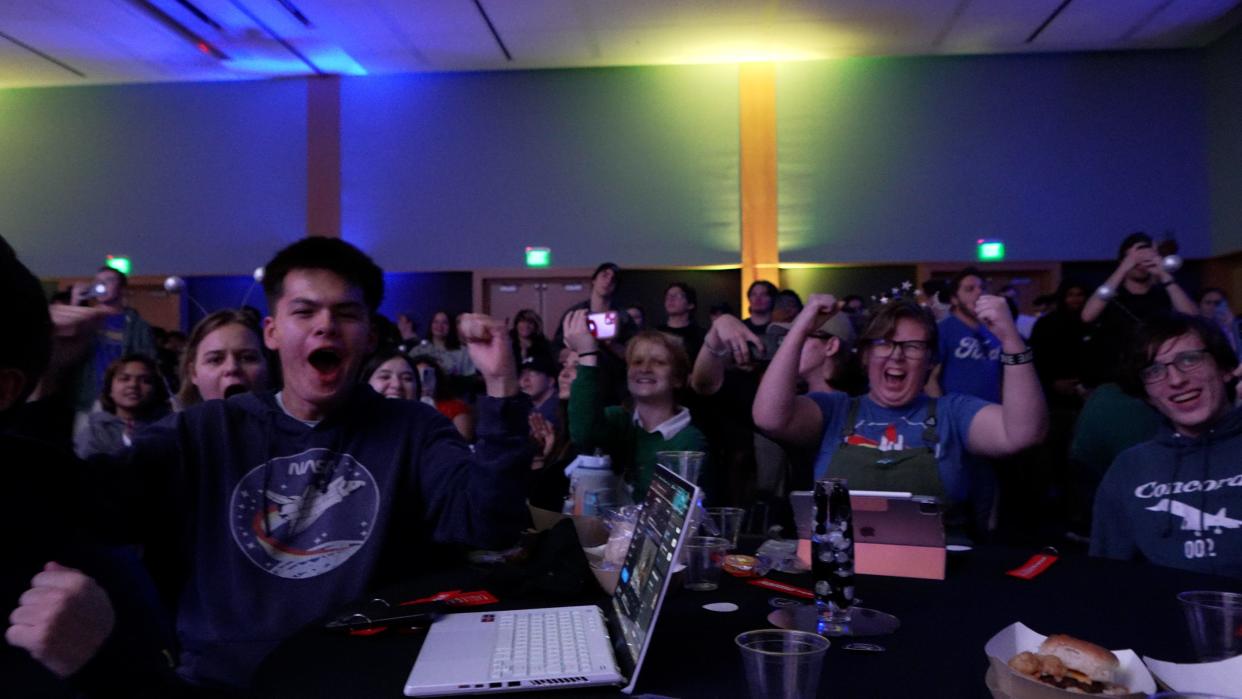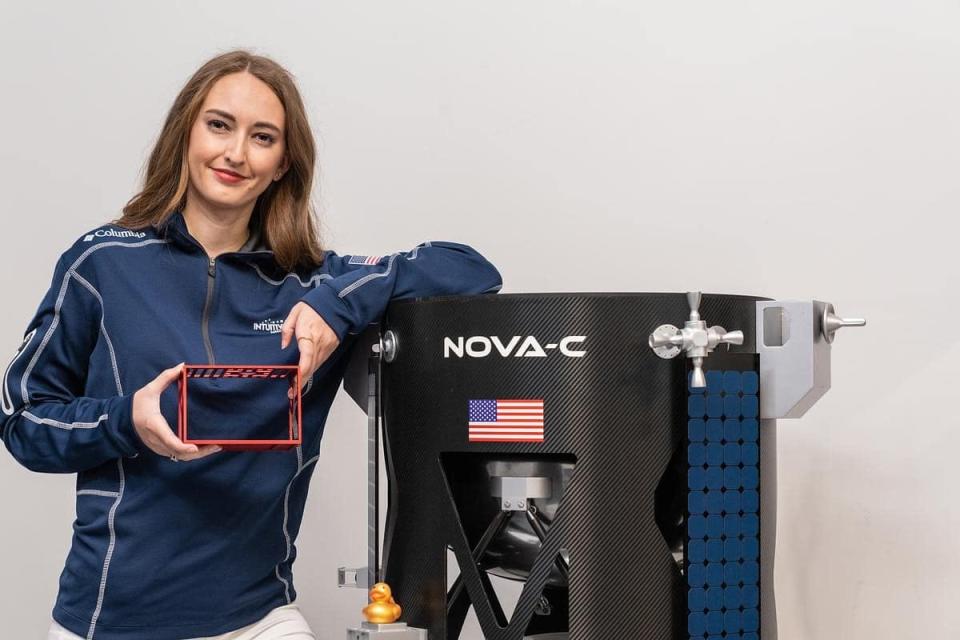NASA, Intuitive Machines confirm Moon landing; ERAU awaits transmission of EagleCam images

- Oops!Something went wrong.Please try again later.
- Oops!Something went wrong.Please try again later.
As NASA and Intuitive Machines have confirmed touchdown of a lander on the Moon Thursday, Embry-Riddle Aeronautical University announced its student-built camera has also survived the challenging landing.
EagleCam is a student-built camera designed to take the first-ever third-person shot of an extraterrestrial landing. The university is awaiting images from the camera.
Odysseus, the Intutitive Machines lunar lander, is uncrewed. Seconds before landing believed to be just before 6:30 p.m., the EagleCam was to have been ejected so it could be on the Moon's surface prior to Odysseus − making it the first U.S. Moon landing in more than 50 years.
We are thrilled that Intuitive Machine's lunar lander and Embry-Riddle's EagleCam landed on the moon -- intact! Congratulations to all involved! #GoERAU #ERAUToTheMoon
— ERAU Daytona Beach (@ERAU_Daytona) February 22, 2024
It's been a weeklong journey from Earth, having been launched by a SpaceX Falcon 9 rocket on Feb. 16.
NASA Administrator Bill Nelson, a former U.S. senator from Florida, described the mission as “a new adventure in science, innovation and American leadership in Space,” as it was a collaboration between the government-run space agency and Intuitive Machines, a private company.
“All of that aced the landing of a lifetime,” Nelson said.
“Today for the first time in more than a half-century, the U.S. has returned to the Moon,” he said. “Today for the first time in the history of humanity, a commercial company, an American company launched and led the voyage up there, and today is the day that shows the power and promise of NASA’s commercial partnerships.”
Embry-Riddle has billed its EagleCam as capable of taking the first selfie of a spacecraft landing. But the camera is not attached to a selfie stick. Instead, it was ejected off the lander and fell to the rough surface of the Moon seconds before Odysseus' touchdown.
The student-built camera includes four lenses inside a CubeSat, or a 10 cm cube satellite protected to survive a drop onto the harsh lunar surface. The plans call for it to be ejected from the lander about 30 meters above the Moon, and take 5 seconds to drop onto the Aitkin basin, a crater near the Moon's south pole. Its mission is to capture images of the final 20 seconds of Odysseus's descent and touchdown.
The project is dependent upon a solar-powered battery that's expected to last 30 minutes.

"After that, we’re going to shut down and we’ll just lay there in tranquility," said Daniel Posada, an ERAU doctoral student and one of the leads for the project.
Posada is part of a team of Embry-Riddle students plus faculty adviser Troy Henderson who were monitoring developments from the space technologies lab, which has been turned into a war room for the event. Henderson is an associate professor of aerospace engineering.
If it all works as anticipated, Taylor Yow, an Embry-Riddle graduate student, said she will await the first images and work with Henderson to help select the right one to post to the team's Instagram page, eraueaglecam.
The technology EagleCam uses to transmit photos back to Earth was expected to be the first use of wifi on the Moon.
Project That Keeps On Giving: Moon lander research by ERAU women inspires corporate donors to support 12 scholarships
This article originally appeared on The Daytona Beach News-Journal: 1st U.S. Moon landing in 51 years includes Embry-Riddle-built camera

